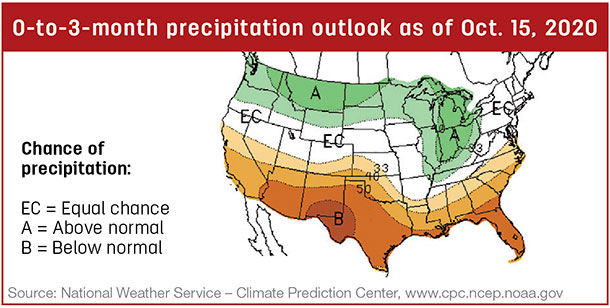As the year comes to an end, it is a good time to look back and evaluate how the operation did and what things can be improved on moving forward to increase profit potential and reduce risk.
It may be tempting to look for that one “silver bullet” to improve the operation. In reality, success in the cow-calf industry is about paying attention to all the details and making sound, well-informed decisions.
Two major keys to success in cow-calf operations are good forage programs and high weaning rates (weaning rate = number of cows that weaned a calf ÷ number of cows exposed to the bulls).
A common “silver bullet” some folks look for is certain feed or mineral supplements, which they perceive will significantly increase pregnancy rates and weaning rates. There are no “silver bullets” in nutrition; it is about meeting the nutrient requirements of the cow herd for the desired level of performance. For certain trace minerals, exceeding requirements can actually lead to reductions in weight gain and reproduction. Copper is one such trace mineral that can be easily oversupplemented, leading to increased costs and reduced performance.

Another perceived “silver bullet” is changing bulls and expecting weaning weights to increase by 75 pounds or more. Remember, weaning weights are a function of both genetics and the environment (i.e., weather, forage quality, etc.). Buying bulls that rank in the top 10th percentile for weaning weight compared with those that ranked in the 75th percentile would only be expected to increase weaning weight by 15 to 22 pounds for common beef breeds. Striving to improve genetics is valuable, but it is important to be realistic about potential changes.
A good forage program impacts both weaning rates and weaning weights. Regardless of what forage species you have, make sure to implement good grazing management strategies to increase forage quality and optimize yield for your environment. Be careful of the allure to change to a new forage species in an attempt to increase forage yield or quality without improving management. Avoiding overgrazing and maintaining appropriate stubble heights will increase forage yield and make forages more drought-tolerant.
If forages respond to nitrogen fertilizer, evaluate the cost of added fertilizer compared with purchasing more hay or feed. Applying or increasing nitrogen fertilizer can often be a very cost-effective option if other plant nutrients are already adequate.







